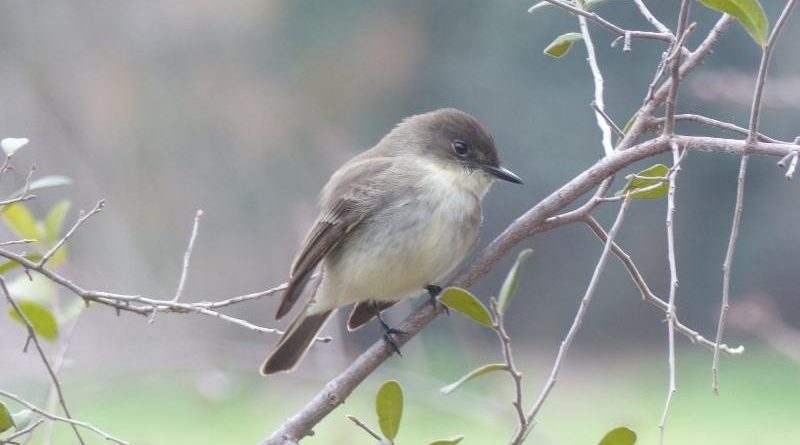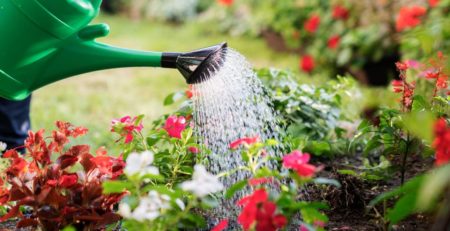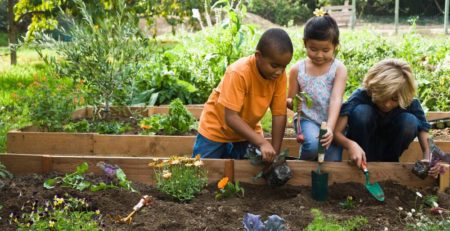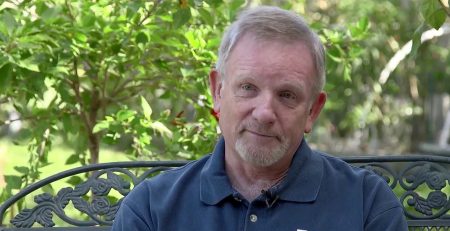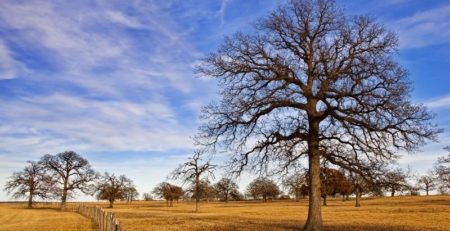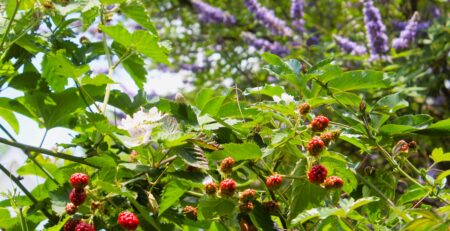Birds In Your Backyard
Watching colorful birds eating, nesting, and raising their young is a great way to relax and marvel at nature. Setting up bird feeders is one way to begin learning about birds, but we are gardeners! Wouldn’t you like to learn how to provide the plants and environment that can bring birds to your yard in a more natural way?
All living creatures need food, water, shelter, and a place to raise their young. When you provide these elements in your landscape, you create a bird-friendly habitat! As natural spaces are gobbled up by our growing cities or for agricultural use, the once plentiful places for birds to live, find food, and nest are rapidly disappearing.
As bird lovers, we are lucky to live in Texas where 615 species are known to live. Texans can enjoy 333 of the 338 migrant species that travel through the Nearctic and Neotropical zoological regions that comprise North America, Greenland, Mexico, Central America, South America, and the Caribbean. Millions of these feathered beauties funnel through our Central Flyway state twice a year as they wing their way between their winter and summer homes. Don’t you love it when the Cedar Waxwings, Ruby-crowned Kinglets, Eastern Phoebes, and Yellow-rumped and Orange-crowned Warblers come to town?
Think about what you can do to help our year-round bird residents as well as migrant birds who need food and shelter along their amazing north-south journeys. You can make your yard the Buc-ee’s for tired, hungry birds flying thousands of miles!
FOOD
Plant native plants to provide the nourishing nectar and native insects birds naturally seek out. According to researcher and author Doug Tallamy, 96% of birds need insect protein—especially for reproduction. A mother bird brings one caterpillar to the nest every minutes and may collect 17 species of caterpillar in three hours. She “shops” within 50 meters of her nest. In the 16 days it takes for a clutch of baby chickadees to go from hatching to fledging, they have eaten 6,000-9,000 caterpillars! Wow! Talk about insect control!

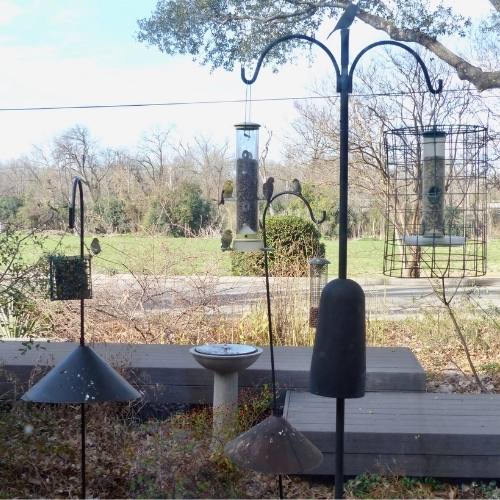
Even hummingbirds need insects and spiders! Make sure your garden provides caterpillars and other soft insects to keep our birds healthy and strong. That means no pesticides! Your native flowers and shrubs attract the native insects birds need—and did you know that birds find lots of caterpillars and other insects in shade trees? Elm, Oak, and Hackberry trees provide valuable food and resting sites for resident and migratory birds like Cardinals, Warblers, and Jays. These, and other trees, host several species of butterfly caterpillars. Birds also enjoy acorns and the little sugar berries these trees provide. Look for the Downy or Red-bellied Woodpecker eating insects or nesting in a cavity in your big trees!
Just a quick word on spiders. We have 900 species of spiders in Texas and only two are harmful. Spiders eat all kinds of insects and birds eat spiders. Plus, spider webs are fascinating. You might even find spider web strands woven into a bird’s nest. Before you squish any living thing in your garden, explore who it eats and who eats it. Most six or eight-legged creatures, even those we may consider scary or pests, play a role in the balance of nature.
Bird feeders are great, but birds don’t eat just bird seed. They also eat insects, fruits, berries, nuts, nectar, and other animals. Your garden can provide all of these! Native grasses such as Inland Seaoats or Sideoats Grama are good sources of seeds and safe cover for birds.
If you do feed the birds, keep your feeders and baths sanitized and the food and water fresh. Consider putting peanuts, seeds (especially black sunflower), and suet in your feeder. For hummingbirds, mix one part plain white sugar with four parts boiling water to create simple syrup. Don’t add red food coloring or honey, which are harmful to hummers.
Rather than being super tidy in the fall, leave spent blooms like Purple coneflower or sunflowers for the American goldfinches and other finches. Many plants bear beautiful berries. Consider planting American beautyberry, Chile pequin (a Mockingbird favorite), Pigeonberry, Dwarf Sabal palm, Mexican plum, Carolina buckthorn, Roughleaf dogwood, and yaupon or possumhaw hollies. Plant evergreen shrubs to provide shelter from the winter cold. Cherry laurel, for example, provides nectar for pollinators, berries for birds, along with dense evergreen foliage where birds can get out of cold winter winds.
Leave leaf litter over winter. It’s not only nourishing free mulch, but it also invites worms and insects that build good soil and feed birds. Some butterflies, moths, and other beneficial insects overwinter in leaf mulch. Watch for robins, sparrows, towhees, and wrens who rifle through fallen leaves to find a snack.
Vines can be a good source of food and cover. Hummers love the tubular flowers of Coral honeysuckle and Coral vine, which also serve as dense cover suitable for nesting. And don’t forget Turk’s cap, Flame acanthus, and Red yucca for the hummers. Virginia creeper provides berries.
Remember, every time we plant a non-native plant, we are reducing the local insect population and depriving birds and wildlife of the food they need to survive and reproduce. Focus on native plants as you create and enjoy a gorgeous landscape that takes good care of our birds!
For a more complete list of native plants, visit the National Audubon Society’s Native Plant Database. You can search by your zip code for suggestions; or, if you want to attract a particular bird, you can look for plants specific to a species.



WATER
Provide shallow, clean, fresh water in a bird bath or pond. Maintain one to two inches of clean water. Water that is moving will attract more birds. This can be a superfun way to watch the birds.
SHELTER AND A PLACE TO RAISE THEIR YOUNG
Whether planning your yard or the landscape in a park, golf course or other space, think about which birds you want to see. The more we plow and pave, the less habitat there is for birds. Just as we need a place to live and eat and work, so do the birds.
Provide natural shelter and nesting sites. Emulate natural habitat by layering the plants in your yard with grasses, shrubs, understory trees, and shade trees. Birds use all sizes of shrubs and trees to rest, hide from predators, and raise babies. Most songbirds need shrubs, small trees, or even vines at heights of six to 15 feet to build nests. Wrens, cardinals, chickadees, tufted titmice, and robins are common nesters in Dallas yards. Many birds use native grasses to build a nest. Shrubs offer a safe escape from predators. Canopy trees offer roosting and perching for birds from small to large.
TOP CHALLENGES BIRDS FACE
According to Texas Parks and Wildlife and the National Audubon Society, the top challenges birds face, other than loss or degradation of habitat, are:
- Climate Change – Climate change is causing more fires, floods, and drought and changing birds’ ranges and the timing of their migration. This puts them out of sync with the food they need. For example, migration may start before berries are ripe. Chicks may hatch before the insects they need emerge. Adult food sources may not be found in ranges further north or at the cooler, higher elevations.
- Cats – Cats kill 1.4 to 3.7 BILLION birds annually. And it’s not just feral cats; pet cats, too. Keep kitty indoors.
- Window Collisions – Each year, 365 to 988 million birds die from colliding with windows. Take a look at a bird’s view of your house and you’ll see your windows are mirrors of your yard! Do what you can to make your windows safe. The National Audubon Society offers information on protecting birds from striking glass windows
- Light pollution – Light pollution disrupts birds’ circadian rhythms. They begin nesting earlier, putting them out of sync with food sources. It also is disorienting during migration and attracts birds to buildings, causing death by bird strikes. Drawn like a moth to a flame, birds drawn to a beam of light will fly in circles until they die of exhaustion. Dallas has recently joined other cities to have Lights Out during March-May and August-October migration periods. Consider changes you could make to minimize the nighttime lighting at your house.
- Herbicides/Pesticides – Herbicides and/or pesticides kill 72 million birds each year. Those who survive suffer loss of body mass, delayed migration, and appetite suppression, which diminish their ability to reproduce or migrate. Neonicotinoid pesticides, one of the main culprits, have already been banned in Europe. Think twice and read carefully before applying any “cide”.
BIRD RESOURCES
Additional resources you might find interesting include:
- The Cornell Lab of Ornithology
- Texas Alliance for America’s Fish and Wildlife \
- Texas Parks & Wildlife Texas Nature Trackers
- Nature’s Best Hope, A New Approach to Conservation That Starts in Your Yard by Douglas W. Tallamy, Timber Press, 2020.
- The Joy of Bird Feeding by Jim Carpenter, published by Scott & Nix, 2017.

Nancy’s Texas verdant, native, drought tolerant landscape has evolved since 1998 when she began studying landscaping for butterflies, bees and birds. Her once-small butterfly garden has developed into almost a quarter acre of habitat where each season she learns more about the life cycles of Nature’s fascinating living things.
Nancy Wilson is a Certified Master Gardener and a member of the DCMG Speaker’s Bureau.

